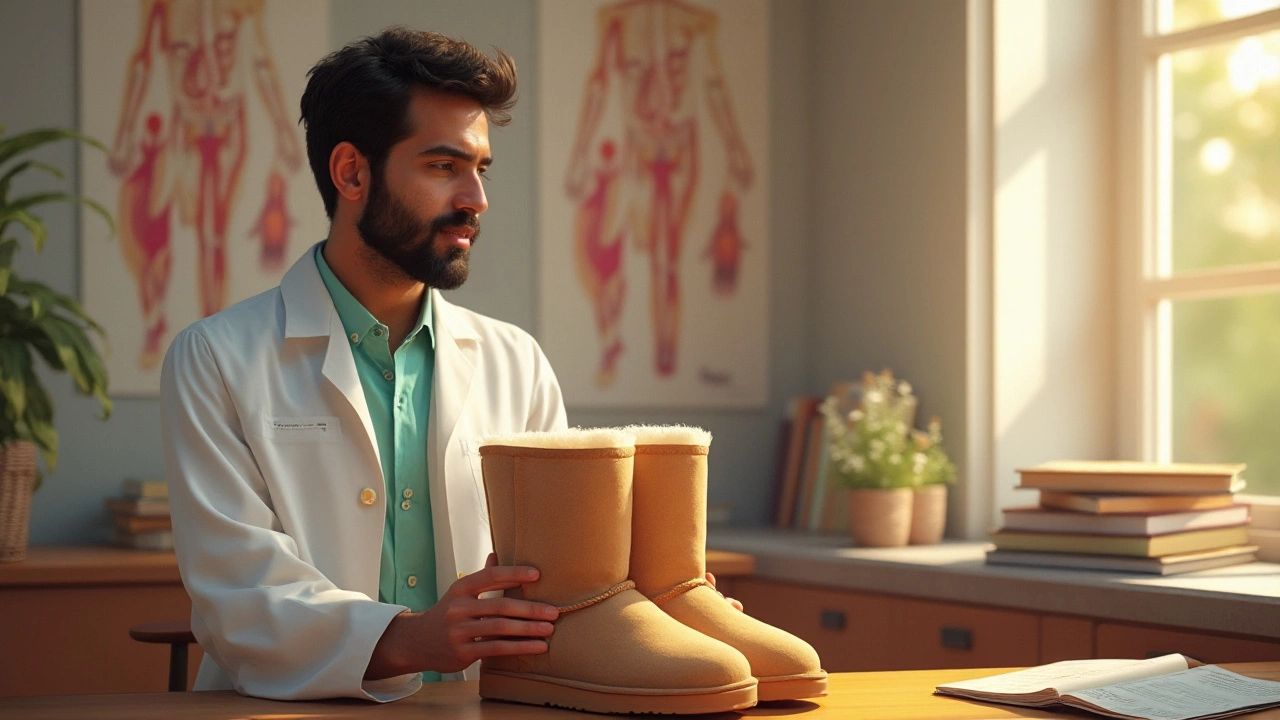Podiatrists Share Essential Foot Care and Style Advice
If you spend hours on your feet or love fashion, you’ve probably wondered how to pick shoes that don’t hurt. Podiatrists get asked this every day, and the answers are simpler than you think. Good foot health starts with the right fit, the right material, and a bit of daily care. Below you’ll find easy steps you can follow right now, plus a few style tricks that keep you looking sharp without sacrificing comfort.
Choosing the Right Shoes for Healthy Feet
First off, measure your feet. Many people buy shoes based on the size they wore years ago, but feet change with age, weight, and activity level. Use a ruler or a printable foot‑measuring chart and write down both length and width. Your ideal shoe should have about a thumb’s width of space between your longest toe and the front of the shoe.
Next, think about the material. Leather and high‑quality synthetics breathe better than cheap plastic, reducing sweat and odor. Podiatrists also recommend shoes with a cushioned insole and a firm heel counter – the part that wraps around the back of the heel. This combo supports your arch and prevents overpronation, a common cause of foot pain.If you’re into trendy pieces like leather shoes or UGG slippers, look for models that offer a removable insole. You can swap in an orthotic or a supportive insert without ruining the look. This works for both dress shoes and casual boots.
Don’t forget the arch type. Flat feet, high arches, and everything in between need different support levels. A quick test is to stand on a piece of paper; if you see a full imprint, you likely have flat feet and benefit from a structured insole. If you see only the heel and forefoot, a cushioned arch might be best.
Style Tips from a Podiatrist’s Perspective
Now that you’ve got the basics, let’s talk style. You can still rock the latest colors and cuts without hurting your feet. For example, grey hoodies are a wardrobe staple; pair them with sneakers that have a breathable mesh upper and a soft sole. This keeps the laid‑back vibe while giving your feet the flexibility they need.
When it comes to denim, the right jean wash matters less than the fit. Straight or relaxed cuts provide extra room in the thigh and calf, reducing pressure points. Pair them with a low‑profile leather shoe that has a rubber sole – you get the classic look and the grip you need for slippery floors.
If you love bold colors, choose shoes in eye‑catching shades that match your outfit’s palette. Bright reds or deep blues can become focal points, but make sure the shoe’s construction follows the comfort rules above. A vibrant sneaker with proper arch support can elevate a simple tee‑and‑short combo instantly.
Finally, remember to give your feet a break. Swap out high heels or tight boots for a comfy pair of trainers after a long day. A quick foot massage or a stretch of the calves can prevent stiffness and keep you ready for the next outfit change.
Bottom line: foot health and fashion don’t have to clash. By measuring, choosing breathable materials, and adding supportive insoles, you’ll enjoy both comfort and style. Your podiatrist would approve, and your wardrobe will thank you.

Do Podiatrists Recommend Crocs? Comfort, Support & Surprising Facts

Why Do Podiatrists Not Recommend Skechers? Work Shoes Under Scrutiny

